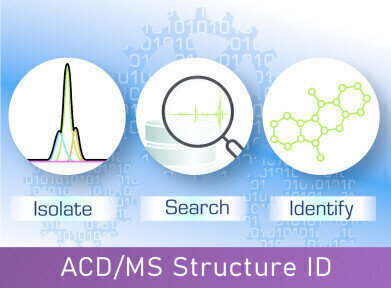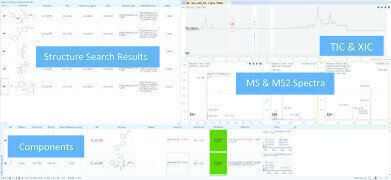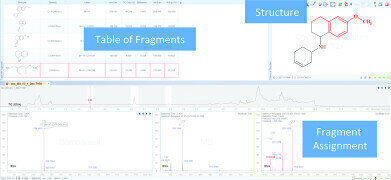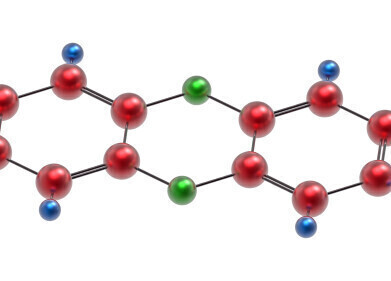GC-MS
Rapid Identification of Unknowns and Structure Characterization
Oct 25 2022
The influx of vast amounts of MS data and incomplete MS databases impose unnecessary challenges to data analyses. MS Structure ID, ACD/Labs’ most advanced multi-technique, vendor-agnostic mass spectroscopy software can help overcome these challenges.
Quick identification of unknowns is supported by rational and methodical workflow provided by MS Structure ID.
One Software Application, Regardless of Data Format
MS Structure ID provides a simple, replicable workflow to detect all key components, extract relevant peaks, and visualize all GC/MS or LC/UV/MSn data together in one interface. You can import, extract, and interpret MS data from all major instrument vendors in one software application.
Detect Components and LC/MS and GC/MS Datasets
Once your data is in the software, you have the tools to help deconvolute complex LC/MS and GC/MS total ion chromatograms and extract individual component traces. The key to efficient LC/MS and GC/MS component identification is the extraction of all relevant peaks and detection of all key components. MS Structure ID will automatically detect chromatographic peaks and associate component mass spectra with each extracted peak. The software also detects all key components by distinguishing and separating co-eluting peaks.
Search Databases to Search Known Structures
MS Structure ID offers the capability to search in-house and commercial databases, which now includes NIST MS search and remote databases. The software accelerates the identification of knowns, so you can concentrate your attention and expertise on more complex tasks.
Identify and Characterize Unknowns
The complicated and often daunting task of identifying and characterizing unknowns is mitigated and divided into manageable workflow segments with MS Structure ID. For the compounds without available spectra, you can search PubChem directly from MS Structure ID for accurate mass and molecular formula matches to simplify identification. The software evaluates match accuracy, provides hit quality indicators, offers convenient visualization of experimental spectra with search results as a mirror plot, and offers improved verification of multiply charged ions in molecular formula and structure.
MS Structure ID offers fragment include/exclude lists to help you further narrow down candidate structures. You can focus large candidate lists and rank candidates by predicted LC or GC retention time, or by correspondence between the experimental mass spectrum and the predicted fragmentation pattern. Structures are attributed an “assignment score” to indicate the consistency between generated fragments and the experimental MSn spectrum and determine the best structural match for experimental data.
Store Knowledge to Speed Up Future Analyses
To help you accelerate structure characterization in the future, take advantage of the databasing capabilities of the software. You can expand your searchable spectra by creating live searchable databases containing spectra, chromatograms, spectral assignments, annotations, methods, and more. MS Structure ID provides complete databasing capabilities with simplified collaboration and increased flexibility in reporting.
Digital Edition
Chromatography Today - Buyers' Guide 2022
October 2023
In This Edition Modern & Practical Applications - Accelerating ADC Development with Mass Spectrometry - Implementing High-Resolution Ion Mobility into Peptide Mapping Workflows Chromatogr...
View all digital editions
Events
ACS National Meeting - Fall 2024
Aug 18 2024 Denver, CO, USA
Sep 04 2024 Chiba, Tokyo, Japan
Sep 04 2024 University of Warwick, Coventry, UK
Sep 10 2024 Rockville, MD, USA
Plastics Recycling World Expo Europe
Sep 11 2024 Brussels, Belgium
















